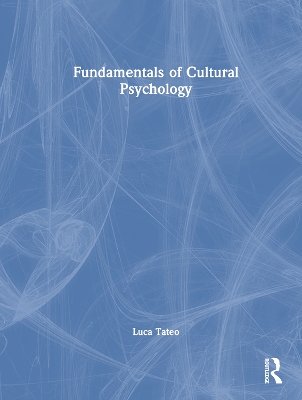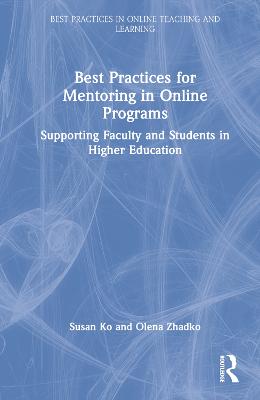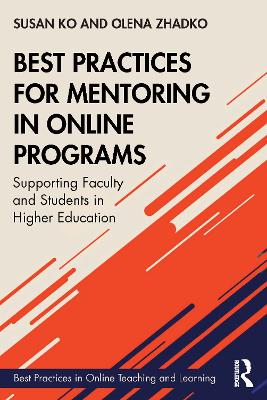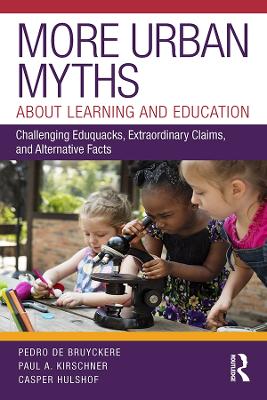Knowing and Learning in Interaction
 -10%
portes grátis
-10%
portes grátis
Knowing and Learning in Interaction
Integrating Social and Cognitive Theories
Brown, John Seely; diSessa, Andrea A.; Levin, Mariana
Taylor & Francis Ltd
12/2023
544
Mole
Inglês
9781138797154
15 a 20 dias
Descrição não disponível.
Section I: Orientation
Studying knowing and learning in interaction: Knowledge Analysis and Interaction
Analysis
Brown, N. J. S., Levin, M., & diSessa, A.
Knowledge Analysis: An introduction
diSessa, A., Sherin, B., & Levin, M.
Interaction Analysis revisited: Old assumptions and new methods in studies of knowing,
learning, and teaching
Hall, R., & Stevens, R.
Section II: Empirical and Theoretical Work
Ecologies of knowing: Lessons from the highly tailored practice of hobbies
Azevedo, F. & Lee, V.
Feedback-relevant places during explanatory narratives
Brown, N. J. S.
Socializing coordination class theory
Danish, J. Enyedy, N. & Parnafes, O.
Perspectives on the clinical interview as an interactive genre
diSessa, A., Michaels, S. & Greeno, J.
Bridging Knowledge Analysis and Interaction Analysis through understanding the
dynamics of knowledge-in-use
Gupta, A., Elby, A., Stevens, R. & Sawtelle, V.
Gestures, speech, and manipulation of objects as a window and interface to individual
cognition
Kapon, S.
A coordination class theory lens on disciplined perception
Levin, M. & diSessa, A.
Examining typicality and variability of discourse in cognitive clinical interviews of student
science knowledge
Russ, R., Lee, V. & Sherin, B.
Uncloaking epistemologies through Interaction Analysis
Umphress, J.
Section III: Dialogue
On the interplay between natural descriptive and hidden machinery orientations to
Knowledge and Interaction Analysis
Hall, R., Nemirovsky, R, Ma, J. & Kelton, M.
Commentary
TBD
Ensemble learning and knowing: Developing a walking scale geometry dilation strategy
Ma, J.
Commentary
Hammer, D., & Conlin, L.
Interaction Analysis and the study of the imaginary
Nemirovsky, R. & Kelton, M.
Commentary
Brown, N. J. S.
Computational analysis and the importance of interactional detail or "Does all that stuff
really matter?"
Sherin, B.
Commentary
TBD
When and what is Protein? A micro-ethnographic case study of concept formation among a
young child and his consociates at home and school
Stevens, R.
Commentary
TBD
Section IV: Synthesis, Conclusions, and Prospects
Jim Greeno, Professor Emeritus of Education at Stanford University and Visiting Scholar at
University of Pittsburgh will write the first of the chapters in the final section of the volume.
Allan Collins, Professor Emeritus of Education and Social Policy at Northwestern University,
will provide a second perspective on frontiers and future prospects for the agenda developed in
this volume. He was the founding editor of the journal Cognitive Science and the first chair of the Cognitive Science Society.
Studying knowing and learning in interaction: Knowledge Analysis and Interaction
Analysis
Brown, N. J. S., Levin, M., & diSessa, A.
Knowledge Analysis: An introduction
diSessa, A., Sherin, B., & Levin, M.
Interaction Analysis revisited: Old assumptions and new methods in studies of knowing,
learning, and teaching
Hall, R., & Stevens, R.
Section II: Empirical and Theoretical Work
Ecologies of knowing: Lessons from the highly tailored practice of hobbies
Azevedo, F. & Lee, V.
Feedback-relevant places during explanatory narratives
Brown, N. J. S.
Socializing coordination class theory
Danish, J. Enyedy, N. & Parnafes, O.
Perspectives on the clinical interview as an interactive genre
diSessa, A., Michaels, S. & Greeno, J.
Bridging Knowledge Analysis and Interaction Analysis through understanding the
dynamics of knowledge-in-use
Gupta, A., Elby, A., Stevens, R. & Sawtelle, V.
Gestures, speech, and manipulation of objects as a window and interface to individual
cognition
Kapon, S.
A coordination class theory lens on disciplined perception
Levin, M. & diSessa, A.
Examining typicality and variability of discourse in cognitive clinical interviews of student
science knowledge
Russ, R., Lee, V. & Sherin, B.
Uncloaking epistemologies through Interaction Analysis
Umphress, J.
Section III: Dialogue
On the interplay between natural descriptive and hidden machinery orientations to
Knowledge and Interaction Analysis
Hall, R., Nemirovsky, R, Ma, J. & Kelton, M.
Commentary
TBD
Ensemble learning and knowing: Developing a walking scale geometry dilation strategy
Ma, J.
Commentary
Hammer, D., & Conlin, L.
Interaction Analysis and the study of the imaginary
Nemirovsky, R. & Kelton, M.
Commentary
Brown, N. J. S.
Computational analysis and the importance of interactional detail or "Does all that stuff
really matter?"
Sherin, B.
Commentary
TBD
When and what is Protein? A micro-ethnographic case study of concept formation among a
young child and his consociates at home and school
Stevens, R.
Commentary
TBD
Section IV: Synthesis, Conclusions, and Prospects
Jim Greeno, Professor Emeritus of Education at Stanford University and Visiting Scholar at
University of Pittsburgh will write the first of the chapters in the final section of the volume.
Allan Collins, Professor Emeritus of Education and Social Policy at Northwestern University,
will provide a second perspective on frontiers and future prospects for the agenda developed in
this volume. He was the founding editor of the journal Cognitive Science and the first chair of the Cognitive Science Society.
Este título pertence ao(s) assunto(s) indicados(s). Para ver outros títulos clique no assunto desejado.
Knowing and Learning in Interaction;Andrea diSessa;Mariana Levin;John Seely Brown;social theory;cognitive theory;cognitive science;educational psychology;embodied cognition;embodied knowledge;experiential knowledge;learning environments;learning science;mediation;sociality;interaction;Knowledge Analysis;Interaction Analysis
Section I: Orientation
Studying knowing and learning in interaction: Knowledge Analysis and Interaction
Analysis
Brown, N. J. S., Levin, M., & diSessa, A.
Knowledge Analysis: An introduction
diSessa, A., Sherin, B., & Levin, M.
Interaction Analysis revisited: Old assumptions and new methods in studies of knowing,
learning, and teaching
Hall, R., & Stevens, R.
Section II: Empirical and Theoretical Work
Ecologies of knowing: Lessons from the highly tailored practice of hobbies
Azevedo, F. & Lee, V.
Feedback-relevant places during explanatory narratives
Brown, N. J. S.
Socializing coordination class theory
Danish, J. Enyedy, N. & Parnafes, O.
Perspectives on the clinical interview as an interactive genre
diSessa, A., Michaels, S. & Greeno, J.
Bridging Knowledge Analysis and Interaction Analysis through understanding the
dynamics of knowledge-in-use
Gupta, A., Elby, A., Stevens, R. & Sawtelle, V.
Gestures, speech, and manipulation of objects as a window and interface to individual
cognition
Kapon, S.
A coordination class theory lens on disciplined perception
Levin, M. & diSessa, A.
Examining typicality and variability of discourse in cognitive clinical interviews of student
science knowledge
Russ, R., Lee, V. & Sherin, B.
Uncloaking epistemologies through Interaction Analysis
Umphress, J.
Section III: Dialogue
On the interplay between natural descriptive and hidden machinery orientations to
Knowledge and Interaction Analysis
Hall, R., Nemirovsky, R, Ma, J. & Kelton, M.
Commentary
TBD
Ensemble learning and knowing: Developing a walking scale geometry dilation strategy
Ma, J.
Commentary
Hammer, D., & Conlin, L.
Interaction Analysis and the study of the imaginary
Nemirovsky, R. & Kelton, M.
Commentary
Brown, N. J. S.
Computational analysis and the importance of interactional detail or "Does all that stuff
really matter?"
Sherin, B.
Commentary
TBD
When and what is Protein? A micro-ethnographic case study of concept formation among a
young child and his consociates at home and school
Stevens, R.
Commentary
TBD
Section IV: Synthesis, Conclusions, and Prospects
Jim Greeno, Professor Emeritus of Education at Stanford University and Visiting Scholar at
University of Pittsburgh will write the first of the chapters in the final section of the volume.
Allan Collins, Professor Emeritus of Education and Social Policy at Northwestern University,
will provide a second perspective on frontiers and future prospects for the agenda developed in
this volume. He was the founding editor of the journal Cognitive Science and the first chair of the Cognitive Science Society.
Studying knowing and learning in interaction: Knowledge Analysis and Interaction
Analysis
Brown, N. J. S., Levin, M., & diSessa, A.
Knowledge Analysis: An introduction
diSessa, A., Sherin, B., & Levin, M.
Interaction Analysis revisited: Old assumptions and new methods in studies of knowing,
learning, and teaching
Hall, R., & Stevens, R.
Section II: Empirical and Theoretical Work
Ecologies of knowing: Lessons from the highly tailored practice of hobbies
Azevedo, F. & Lee, V.
Feedback-relevant places during explanatory narratives
Brown, N. J. S.
Socializing coordination class theory
Danish, J. Enyedy, N. & Parnafes, O.
Perspectives on the clinical interview as an interactive genre
diSessa, A., Michaels, S. & Greeno, J.
Bridging Knowledge Analysis and Interaction Analysis through understanding the
dynamics of knowledge-in-use
Gupta, A., Elby, A., Stevens, R. & Sawtelle, V.
Gestures, speech, and manipulation of objects as a window and interface to individual
cognition
Kapon, S.
A coordination class theory lens on disciplined perception
Levin, M. & diSessa, A.
Examining typicality and variability of discourse in cognitive clinical interviews of student
science knowledge
Russ, R., Lee, V. & Sherin, B.
Uncloaking epistemologies through Interaction Analysis
Umphress, J.
Section III: Dialogue
On the interplay between natural descriptive and hidden machinery orientations to
Knowledge and Interaction Analysis
Hall, R., Nemirovsky, R, Ma, J. & Kelton, M.
Commentary
TBD
Ensemble learning and knowing: Developing a walking scale geometry dilation strategy
Ma, J.
Commentary
Hammer, D., & Conlin, L.
Interaction Analysis and the study of the imaginary
Nemirovsky, R. & Kelton, M.
Commentary
Brown, N. J. S.
Computational analysis and the importance of interactional detail or "Does all that stuff
really matter?"
Sherin, B.
Commentary
TBD
When and what is Protein? A micro-ethnographic case study of concept formation among a
young child and his consociates at home and school
Stevens, R.
Commentary
TBD
Section IV: Synthesis, Conclusions, and Prospects
Jim Greeno, Professor Emeritus of Education at Stanford University and Visiting Scholar at
University of Pittsburgh will write the first of the chapters in the final section of the volume.
Allan Collins, Professor Emeritus of Education and Social Policy at Northwestern University,
will provide a second perspective on frontiers and future prospects for the agenda developed in
this volume. He was the founding editor of the journal Cognitive Science and the first chair of the Cognitive Science Society.
Este título pertence ao(s) assunto(s) indicados(s). Para ver outros títulos clique no assunto desejado.
Knowing and Learning in Interaction;Andrea diSessa;Mariana Levin;John Seely Brown;social theory;cognitive theory;cognitive science;educational psychology;embodied cognition;embodied knowledge;experiential knowledge;learning environments;learning science;mediation;sociality;interaction;Knowledge Analysis;Interaction Analysis







